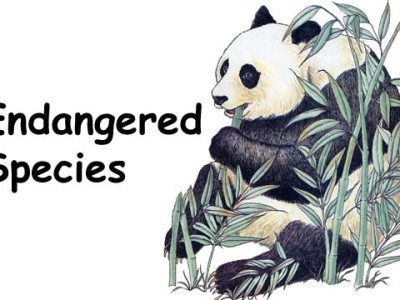biodiversity
When is a bee a fish?
The California Court of Appeal finds that invertebrates can be protected under the California Endangered Species Act
That was the question before the Third District of the California Court of Appeal. The California Fish and Game Commission had accepted petitions to list four species of native California bees for protection under the California Endangered Species Act (CESA). A group of agricultural trade associations challenged the decision as exceeding the Commission’s authority …
Continue reading “When is a bee a fish?”
CONTINUE READINGReforming the California Endangered Species Act
Updating the state’s landmark biodiversity law for the twenty-first century
California has a rich heritage of biodiversity, with many species found nowhere else in the world (including the iconic giant sequoia trees). But California’s biodiversity faces grave threats – pressures from development that eliminates habitat; water shortages that harm aquatic species in California’s rivers; and climate change impacts that are shifting and altering habitats, among …
Continue reading “Reforming the California Endangered Species Act”
CONTINUE READINGCalculating the Extinction Cost of Carbon
Or, how many megatons do we need to cut to prevent one extinction?
Economists often talk about the social cost of carbon, which basically translates the harm done by a ton of CO2 into dollars. The dollar metric is less useful as applied to ecological impacts like species extinctions than impacts of humans. It may be better to skip the dollar conversion, and just ask how much a …
Continue reading “Calculating the Extinction Cost of Carbon”
CONTINUE READINGThe Kolbert Report
Elizabeth Kolbert’s new book asks what it means to protect nature in the Anthropocene.
Elizabeth Kolbert’s new book, Under a White Sky, opens with the story of the battle to keep invasive Asian carp out of the Great Lakes. The problem exists because of two earlier interventions with nature. A century ago, we reversed the flow of the Chicago river to keep the city’s pollutants out of Lake Michigan …
Continue reading “The Kolbert Report”
CONTINUE READINGThe Whipsaw Effect
Get ready for a rough ride, with sudden weather reversals and climate shifts.
Steady predictable changes in climate and weather would be easier to adapt to. Instead, we may well see some very sudden shifts, both in terms of short-term weather and longer-term climate regimes.
CONTINUE READINGDeferred Planetary Maintenance
It’s easy to put off long-term problems when there’s a crisis. Much too easy, actually.
Long-term problems get short shrift in a crisis. That’s true of infrastructure repair; it’s also true of climate change. Like deferred maintenance, climate change just gets bigger the longer it’s put off. I often see the fruits of deferred maintenance on the Berkeley campus. Building conditions are a huge problem at Berkeley. Whenever there’s a …
Continue reading “Deferred Planetary Maintenance”
CONTINUE READINGPublic Lands Watch: Final Changes to Sage Grouse Protections
BLM announces final version of revisions to protections for sage grouse on Western federal public lands
This blog post was drafted by Jamie T. Martinez. On March 15, the Trump administration finalized its plan to loosen protections on federal lands for the habitat of the greater sage-grouse, a near-threatened species that lives in sagebrush country across the western United States. The final plan amends the resource plans adopted in 2015 to …
Continue reading “Public Lands Watch: Final Changes to Sage Grouse Protections”
CONTINUE READINGSave the Monarch!
The plight of California’s iconic butterfly highlights the need to overhaul the state’s endangered species law
The Monarch butterfly is an iconic species for Californians. And it is heading rapidly towards extinction within the state, as the population counts for the California population this year indicate that butterfly numbers fell 86% in a single year, over a 99% drop since the 1980s, and the size of the population is now small …
Continue reading “Save the Monarch!”
CONTINUE READINGAnother Scary Election (But Not Here)
An election next Sunday has implications for the entire planet.
I hate to give you something else to freak out about in our current Age of Anxiety, but there’s a very worrisome presidential election next Sunday. No, I haven’t completely lost it – the presidential race isn’t here, it’s in Brazil. The election pits a dangerous populist against a highly competent but colorless Establishment candidate. …
Continue reading “Another Scary Election (But Not Here)”
CONTINUE READINGComments on proposed ESA rule changes
Law professors submit detailed comments on proposed changes to regulations that implement the Endangered Species Act
I’ve posted earlier about proposals by the Trump Administration to make significant changes to the regulations implementing the Endangered Species Act, some of the most substantial revisions to those regulations since they were overhauled in the early 1980s. A group of environmental law professors (including me) submitted comments on those proposed rules last month, with …
Continue reading “Comments on proposed ESA rule changes”
CONTINUE READING







